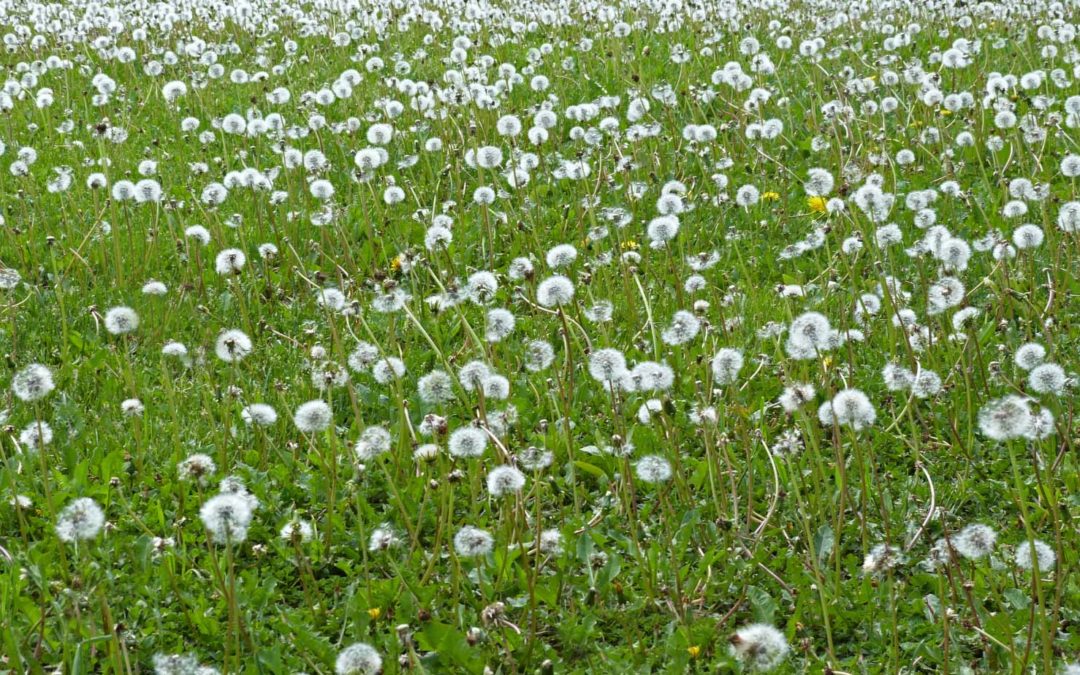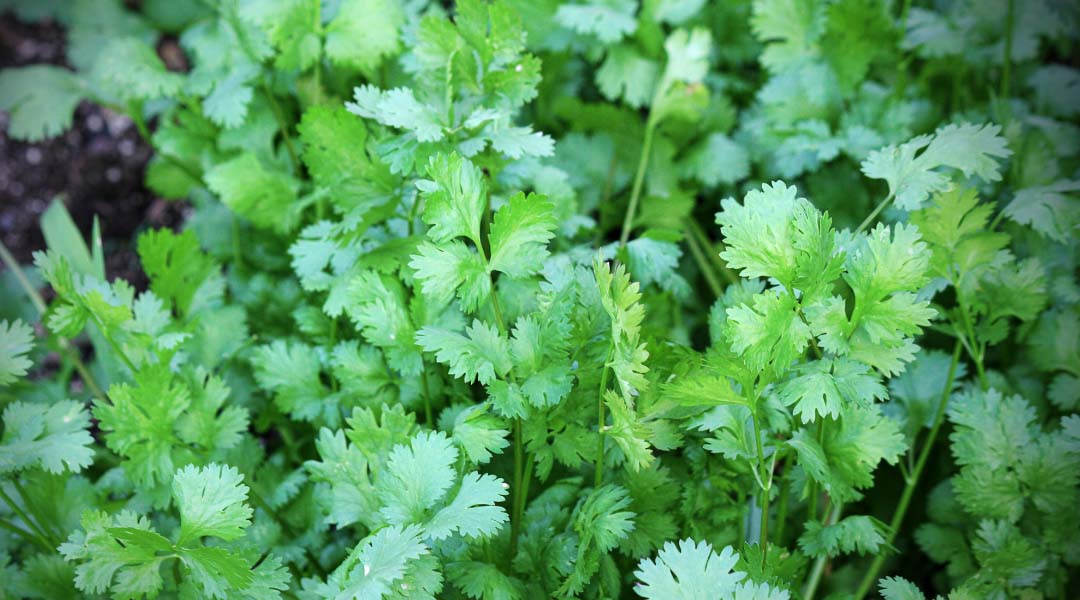Cilantro, also known as coriander, is a versatile herb cherished by many cultures worldwide. Its bright green leaves add a burst of freshness to dishes, while its seeds—coriander—are prized for their warm, citrusy flavor. Growing cilantro at home not only ensures you have a constant supply of this flavorful herb but also gives you control over how it’s grown, allowing you to enjoy organic, chemical-free produce. This guide will walk you through the entire process of growing cilantro, from planting to harvesting, ensuring your herb garden flourishes.
Cilantro vs. Coriander
Before diving into the details of growing cilantro, it’s essential to understand the difference between cilantro and coriander. In many parts of the world, including the United States, the leaves and stems of the plant are referred to as cilantro, while the seeds are known as coriander. However, in some regions, the entire plant is called coriander. This dual use can be confusing, but understanding it is key to growing and using the plant effectively.
Growth Cycle
Cilantro is a cool-season herb that grows best in the spring and fall. It has a relatively short life cycle, quickly transitioning from leafy growth to flowering and seed production (bolting) as temperatures rise. Understanding this cycle is crucial for timing your planting and harvesting to maximize your yield.
Ideal Growing Conditions
Cilantro thrives in cool, mild weather, with an ideal temperature range between 50°F and 85°F. It prefers full sun but can tolerate partial shade, especially in warmer climates where some afternoon shade can prevent premature bolting. The soil should be well-drained, loamy, and rich in organic matter, with a pH between 6.2 and 6.8.
How to Grow Cilantro
Preparatin Before Planting
Choosing the Right Location
The first step in growing cilantro is selecting the right location. Choose a spot that receives at least 4-6 hours of sunlight per day. If you’re growing cilantro indoors, place the pot near a sunny window or use grow lights to provide the necessary light. The location should also have good air circulation to prevent fungal diseases.
Soil Preparation
Proper soil preparation is vital for cilantro to thrive. Start by testing your soil’s pH and adjusting it if necessary. Cilantro prefers slightly acidic to neutral soil (pH 6.2-6.8). Amend the soil with compost or well-rotted manure to improve its structure and fertility. This will provide the essential nutrients cilantro needs and help retain moisture without becoming waterlogged.
Seed Selection
Selecting high-quality seeds is crucial for successful cilantro growth. Opt for organic or heirloom seeds to ensure robust plants. Cilantro seeds can be directly sown in the ground or started indoors for transplanting later. While direct seeding is often preferred, transplanting can be done carefully to avoid disturbing the roots.
Planting Cilantro
Sowing Seeds
Cilantro is best sown directly into the garden as it doesn’t transplant well due to its long taproot. The ideal time to plant is in early spring or fall, depending on your climate. Sow seeds about 1/4 inch deep, spacing them 6-8 inches apart in rows that are 12-18 inches apart. Keep the soil evenly moist during the germination period, which typically lasts 7-14 days.
Germination and Seedling Care
Once the seeds germinate, thin the seedlings to prevent overcrowding, which can lead to poor air circulation and disease. The thinned seedlings can be transplanted to another area or used in the kitchen. Ensure the soil remains moist but not waterlogged, and consider using a light mulch to retain moisture and keep the soil cool.
Transplanting (Optional)
If you choose to start cilantro indoors, transplant the seedlings outdoors when they have at least two true leaves and after all danger of frost has passed. Be gentle during the transplanting process to avoid damaging the delicate roots. For container growing, ensure the pots are at least 8-10 inches deep to accommodate the taproot.
Growing and Caring for Cilantro
Watering
Cilantro requires consistent moisture to grow well. Water the plants regularly, providing about 1-2 inches of water per week. It’s important to keep the soil evenly moist, especially during the germination and early growth stages. However, avoid overwatering, as cilantro doesn’t like soggy soil, which can lead to root rot.
Fertilizing
Cilantro doesn’t require heavy feeding, but it benefits from occasional fertilization. Use a balanced fertilizer, such as a 10-10-10 formula, every 4-6 weeks during the growing season. Organic options like compost tea or fish emulsion can also be used to provide a steady supply of nutrients. Over-fertilizing should be avoided as it can lead to lush foliage but reduced flavor.
Mulching
Mulching is an effective way to conserve soil moisture, suppress weeds, and keep the soil temperature stable. Apply a layer of organic mulch, such as straw or grass clippings, around the plants. This not only helps retain moisture but also prevents the soil from heating up too quickly, which can cause the cilantro to bolt.
Pruning and Harvesting
Regular pruning helps cilantro plants stay bushy and delays bolting. Start harvesting cilantro leaves once the plants are about 6 inches tall. Cut the outer leaves first, allowing the inner ones to continue growing. To encourage continuous growth, avoid cutting more than one-third of the plant at a time. When the plant starts to bolt, you can let it flower and then harvest the seeds to use as coriander.
Common Issues and Solutions
Pests
Cilantro is generally resistant to pests, but it can occasionally be affected by aphids, spider mites, and leafhoppers. Inspect your plants regularly and remove any pests by hand or use organic pest control methods like neem oil or insecticidal soap.
Diseases
Cilantro can suffer from fungal diseases such as powdery mildew and leaf spot, especially in humid conditions. To prevent these diseases, ensure good air circulation around the plants, avoid overhead watering, and remove any affected leaves promptly.
Bolting
Bolting occurs when cilantro plants start to flower prematurely, which often happens in hot weather. To prevent bolting, plant cilantro in cooler weather, provide shade during the hottest part of the day, and keep the soil consistently moist. Succession planting every 2-3 weeks can also ensure a continuous supply of fresh leaves.
Harvesting and Storage
Harvesting Cilantro Leaves
The best time to harvest cilantro leaves is early in the morning when the essential oils are at their peak. Use sharp scissors to trim the leaves, cutting close to the stem. Regular harvesting encourages the plant to produce more leaves and delays bolting.
Harvesting Coriander Seeds
Once the plant bolts and flowers, it will produce seeds. Wait until the seeds turn brown before harvesting. Cut the seed heads and hang them upside down in a paper bag to dry. Once dried, the seeds can be stored in an airtight container in a cool, dark place.
Storing Fresh Cilantro
Fresh cilantro can be stored in the refrigerator for up to a week. To extend its shelf life, wrap the stems in a damp paper towel and place them in a plastic bag. Alternatively, you can freeze cilantro leaves by placing them in a freezer bag or drying them for long-term storage.
Companion Planting and Crop Rotation
Companion Plants for Cilantro
Cilantro grows well alongside certain plants, benefiting both the cilantro and its companions. Tomatoes, spinach, and lettuce are excellent companions for cilantro as they enjoy similar growing conditions and can help deter pests.
Plants to Avoid
Avoid planting cilantro near fennel, as the two plants can inhibit each other’s growth. Additionally, cilantro may struggle when grown too close to larger, more competitive plants that can overshadow it.
Crop Rotation
To maintain soil health and prevent disease, practice crop rotation. Rotate cilantro with crops from different plant families, such as beans or peas, to reduce the risk of soil-borne diseases and nutrient depletion.
Using Cilantro in the Kitchen
Culinary Uses
Cilantro is a staple in many cuisines, including Mexican, Indian, and Thai. Its bright flavor pairs well with spicy dishes, salsas, salads, and soups. The seeds, or coriander, are often used in baking, pickling, and as a spice in curry powders.
Recipes
Here are a few simple recipes to make the most of your cilantro:
- Cilantro Pesto: Blend fresh cilantro leaves with garlic, olive oil, nuts, and Parmesan cheese for a zesty pesto sauce.
- Salsa Verde: Combine chopped cilantro, tomatillos, green chilies, garlic, and lime juice for a tangy salsa verde.
- Coriander Spice Blend: Toast coriander seeds and grind them with cumin, fennel, and peppercorns for a versatile spice mix.
Coriander Seed Uses
Coriander seeds are incredibly versatile and can be used in various dishes. They are often ground and used in spice blends, curries, marinades, and baked goods. Whole seeds can also be used in pickling or as a flavoring agent in soups and stews.
Conclusion
Growing cilantro at home is a rewarding experience that provides you with a fresh, aromatic herb to enhance your cooking. By understanding its growth cycle, ideal growing conditions, and how to care for it, you can enjoy a bountiful harvest throughout the growing season. Whether you’re harvesting the leaves for fresh cilantro or the seeds for coriander, this guide has provided you with all the information you need to cultivate this versatile herb successfully.
You May Also Like
How to Grow Herbs Indoors
Herbs are a fantastic addition to any kitchen, adding fresh flavors to your meals and a burst of green to your indoor space. Whether you’re an experienced gardener or just getting started, learning how to grow herbs indoors is a rewarding and straightforward process....
When to Cut Back Ornamental Grasses
When to Cut Back Ornamental Grasses: A Complete Guide for Gardeners Ornamental grasses are a stunning addition to any garden, adding texture, movement, and color throughout the year. However, like any other plant, they require regular maintenance to thrive and...

How to Get Rid of Dandelions in Your Yard
Maintaining a pristine, lush green lawn is every homeowner’s dream, but dandelions can quickly turn that dream into a nightmare. These persistent weeds not only disrupt the appearance of your lawn but also compete with your grass for nutrients, water, and sunlight. In...

How to Grow Green Lawn | Gardening Tips
How to Grow a Green Lawn: A Complete Guide Having a lush, green lawn is every homeowner’s dream. A well-maintained lawn enhances curb appeal, creates a relaxing outdoor space, and even contributes to a healthier environment. If you've ever wondered how to grow a green...
How to Grow Herbs Indoors
Herbs are a fantastic addition to any kitchen, adding fresh flavors to your meals and a burst of green to your indoor space. Whether you’re an experienced gardener or just getting started, learning how to grow herbs indoors is a rewarding and straightforward process....
When to Cut Back Ornamental Grasses
When to Cut Back Ornamental Grasses: A Complete Guide for Gardeners Ornamental grasses are a stunning addition to any garden, adding texture, movement, and color throughout the year. However, like any other plant, they require regular maintenance to thrive and...

How to Get Rid of Dandelions in Your Yard
Maintaining a pristine, lush green lawn is every homeowner’s dream, but dandelions can quickly turn that dream into a nightmare. These persistent weeds not only disrupt the appearance of your lawn but also compete with your grass for nutrients, water, and sunlight. In...

How to Grow Green Lawn | Gardening Tips
How to Grow a Green Lawn: A Complete Guide Having a lush, green lawn is every homeowner’s dream. A well-maintained lawn enhances curb appeal, creates a relaxing outdoor space, and even contributes to a healthier environment. If you've ever wondered how to grow a green...


0 Comments